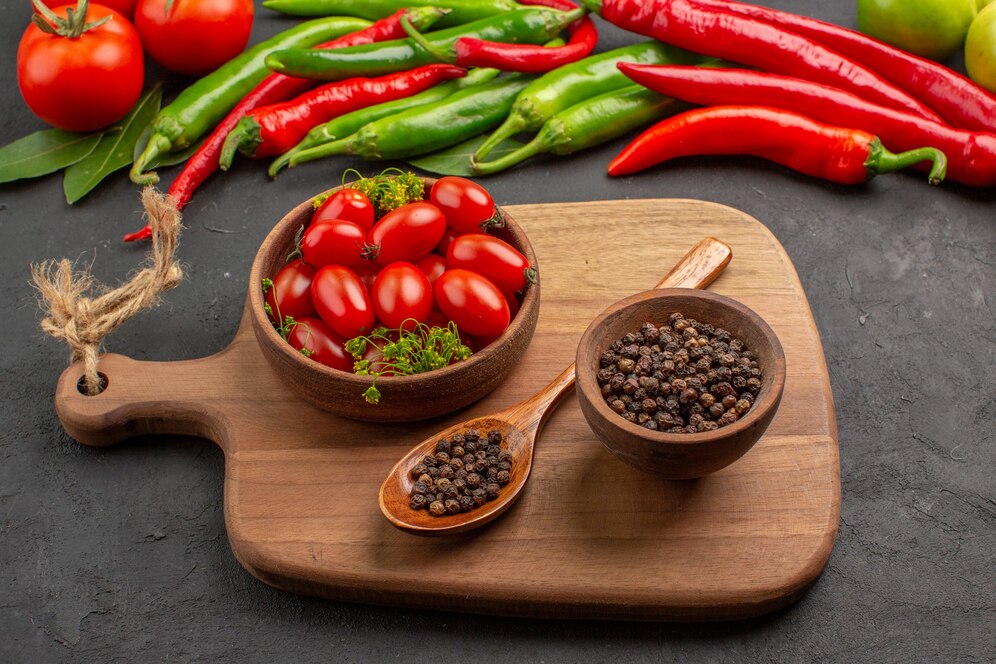Welcome to a vibrant world of culinary delights where we dive into the intriguing realm of Capia Peppers! These stunning elongated peppers, also known as Sweet Pointed Peppers, are not only visually appealing but also pack a flavorful punch that can elevate any dish. Join us on this journey as we explore the beauty, benefits, and endless possibilities that Capia Peppers bring to the table. Let’s uncover why these peppers are becoming a favorite in kitchens worldwide!
About Capia Peppers
Originating from the sunny fields of Turkey, Capia Peppers are a type of sweet pepper with a vibrant red hue and a distinct elongated shape. These peppers are often compared to Italian frying peppers, but they have their own unique flavor profile. The name “Capia” actually comes from the Turkish word for ‘red’, which perfectly describes their rich color.
Capia Peppers are known for their thick flesh and sweet taste, making them versatile in various culinary applications. Whether roasted, grilled, stuffed, or simply sliced raw in salads, these peppers add depth and sweetness to dishes.
In terms of heat levels, Capia Peppers fall on the milder side of the scale compared to other chili varieties. This makes them perfect for those who enjoy the flavor of peppers without too much spiciness overpowering the dish.
Capia Peppers bring not only visual appeal to your meals but also a delightful sweetness that can enhance both savory and sweet recipes alike.
Beauty of Capia Peppers
The beauty of Capia peppers lies in their vibrant and eye-catching appearance. These peppers boast a stunning shade of red that adds a pop of color to any dish they grace. Their elongated shape and glossy skin make them not only visually appealing but also versatile in the culinary world.
When sliced open, the inner walls reveal a beautiful crimson hue with few seeds, making them easy to clean and prepare for cooking. The thick flesh of Capia peppers offers a satisfying crunch when raw and becomes wonderfully tender when roasted or grilled.
Whether used as a garnish, stuffed with flavorful fillings, or blended into sauces and dips, Capia peppers elevate dishes with both their aesthetic appeal and rich flavor profile. Their mild sweetness pairs well with various ingredients, enhancing the overall taste experience.
In addition to their visual allure, Capia peppers contribute essential vitamins and antioxidants to your diet, making them not just a pretty face but also a nutritious addition to your meals.
Culinary Uses of Capia Peppers
Capia peppers are a versatile ingredient that can elevate any dish with their vibrant color and sweet flavor. These peppers can be used in various culinary applications, making them a favorite among chefs and home cooks alike.
One popular way to use capia peppers is by roasting them to enhance their natural sweetness and add a smoky flavor to dishes. They can be roasted whole, sliced, or stuffed with ingredients like cheese or grains for a delicious appetizer or side dish.
Another common culinary use of capia peppers is in salads and salsas. Their bright red hue adds visual appeal to any dish, while their mild heat level provides a subtle kick of flavor.
Capia peppers also work well in stir-fries, soups, stews, and sauces. Whether added raw for crunch or cooked down for depth of flavor, these peppers can bring an extra dimension to your favorite recipes.
Health Benefits of Capia Peppers
Capia peppers not only add a pop of color to your dishes but also pack a powerful punch when it comes to health benefits. These vibrant peppers are rich in vitamins A, C, and K, which can help boost your immune system and promote healthy skin.
Moreover, capia peppers contain antioxidants that may help reduce inflammation in the body and lower the risk of chronic diseases. The presence of capsaicin in these peppers has been linked to aiding digestion and even boosting metabolism.
Including capia peppers in your diet can also contribute to better heart health due to their ability to lower cholesterol levels and regulate blood pressure. Additionally, their high fiber content can support gut health and aid in weight management.
Incorporating capia peppers into your meals is a delicious way to reap numerous health benefits while adding a flavorful kick to your culinary creations.
How to Incorporate Capia Peppers into Your Diet
Looking to spice up your meals with a pop of vibrant color and flavor? Incorporating Capia peppers into your diet is a delicious way to do just that. These sweet and crisp peppers are versatile, making them perfect for various dishes.
One simple way to enjoy Capia peppers is by adding them to salads. Slice them thinly or dice them up for a burst of freshness in every bite. You can also roast or grill the peppers to bring out their natural sweetness and smoky undertones.
For a heartier meal, stuff Capia peppers with your favorite fillings like quinoa, feta cheese, and herbs. Baking them until tender creates a mouthwatering dish that’s both satisfying and nutritious.
Incorporating Capia peppers into stir-fries, pasta dishes, or even as toppings on homemade pizzas can elevate the flavors of your meals effortlessly.
Get creative in the kitchen and experiment with different recipes featuring these beautiful peppers to discover new culinary delights!
Recipes Featuring Capia Peppers
Capia peppers are a versatile ingredient that can elevate any dish with their vibrant color and sweet flavor. One delicious way to showcase these peppers is by incorporating them into a classic pasta dish. Sauteed ca-pia peppers add a pop of color and taste to a simple spaghetti aglio e olio.
For those looking for a healthier option, stuffed ca-pia peppers make for an impressive and nutritious meal. Fill them with quinoa, black beans, corn, and spices for a flavorful vegetarian entree that’s sure to impress even the most discerning palate.
If you’re in the mood for something spicy, try making homemade harissa sauce using roasted capia peppers blended with garlic, olive oil, and cumin. This fiery condiment is perfect for adding heat to grilled meats or roasted vegetables.
Whether you prefer your dishes mild or spicy, there’s no shortage of recipes featuring ca-pia peppers to inspire your culinary creativity.
Conclusion
As we wrap up our exploration of Capia peppers, it’s clear that these vibrant red beauties have a lot to offer. From their stunning appearance to their versatility in the kitchen, Capia peppers bring a unique flavor profile to dishes.
Whether you’re looking to add a pop of color to your salads or spice up your stews, Ca-pia peppers are sure to impress with their sweet and mildly spicy taste. Their crunchy texture adds an extra dimension to any dish they’re added to.
In terms of health benefits, Ca-pia peppers are packed with vitamins and antioxidants that can support overall well-being. Incorporating them into your diet can be a tasty way to boost your immune system and promote good health.
With so many culinary uses and health benefits, it’s no wonder why Ca-pia peppers have become a favorite ingredient for chefs and home cooks alike. So next time you’re at the grocery store, be sure to pick up some Ca-pia peppers and get creative in the kitchen!
FAQs
Can I grow Ca-pia peppers at home?
Yes, you can definitely grow Ca-pia peppers at home as they are easy to cultivate in containers or garden beds, provided they receive adequate sunlight and water.
How do I store fresh Ca–pia peppers?
To keep fresh Ca-pia peppers lasting longer, store them in the refrigerator in a breathable container or plastic bag. They can last up to one week when stored properly.
What is the difference between Ca-pia and bell peppers?
While both are sweet pepper varieties, Ca-pia peppers tend to have a thicker flesh and slightly sweeter taste compared to traditional bell peppers.










